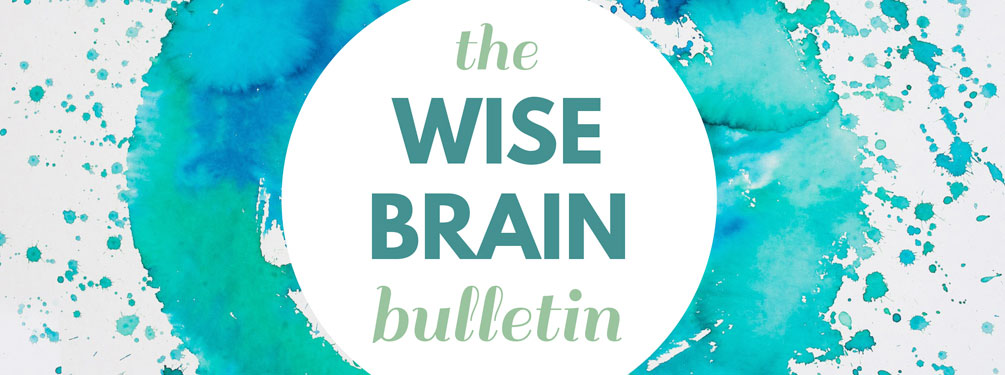News and Tools for
Happiness, Love, and Wisdom
volume 12.6 • 2018
Smart-Selfing
© 2018 Kate Gustin, Ph.D.
The truth is we have all been taken over! An identity theft has occurred within our very own heads. The culprit? The self. The voice of our thoughts. The clever mind has generated a thinking process so compelling and seemingly continuous that it has taken on a life and label of its own: “self.”
Humanity has been brainwashed by this inner voice of the mind that accompanies us 24/7 and comments on our every waking moment. The seat of our thoughts has insidiously granted itself such convincing personhood that it seems outrageous to even question the self’s validity in the first place. But, if we look closely, we can see that, other than the conditioned thought-forms out of which it is constructed, the self lacks substance.
The self is like the announcer of a ballgame – announcing each play as it occurs, providing background information about the athletes, speculating about the season’s prospects, creating the overall story of the game. But the story of the game is obviously not the game itself. The game happens independent of whether the announcer is present. The self-commentator has mistaken itself as the ballgame, which is to say that collectively we have mistaken the voice in our heads as our true being.
In buying into the mind’s language-based narrative, bestowing the ether-like entity the privilege of claiming to be who we are, we have come to identify with a mere fraction of the limitless expanse of our spirit, intelligence, and potential.
Mind as Tool

The moment one realizes that the mind is an instrument one can then break free of the artifice of the “self.” Smart-selfing consists of engaging the mind’s commentary in a deliberate way towards this end, towards remembrance of one’s true identity in the present moment.
It’s been a privilege to watch students and clients come to such a revelation. At first, the suggestion to view one’s thinking as a separate and somewhat impersonal process tends to encounter skepticism: Why would I separate myself from the workings of my own mind?! But then, after some inquiry, the insight ripens – that one has a mind, a tool of thought to be used at will rather than the common experience/perception of the self being used as a tool by the mind.
The insight that the mind’s analysis is an optional instrument we can pick up or put down has profound implications; namely, that one no longer has to be at the mercy of the mind’s whims, moods, and motives. Jane can see her depressive thoughts and not be the depression. Bill can watch the anxiety activate his nervous system without taking each anxious thought at face value. And suddenly, the problems that caused one to seek help – the “not-good-enough” beliefs, the “guilty-until-proven-innocent” judgments, the “what-if” worries – have lost their charge. They may still arise in thought, especially if the mind has been conditioned to think in a certain way. But, the products and habits of the mental apparatus are no longer conflated with who one is.
Greetings
The Wise Brain Bulletin offers skillful means from brain science and contemplative practice – to nurture your brain for the benefit of yourself and everyone you touch.
The Bulletin is offered freely, and you are welcome to share it with others. Past issues are posted at http://www.wisebrain.org/tools/wise-brain-bulletin.
Rick Hanson, PhD, edits the Bulletin. Michelle Keane is its managing editor, and it’s designed and laid out by the design team at Content Strategy Online.
To subscribe, go to http://www.wisebrain.org/tools/wise-brain-bulletin.
Smart-Selfing Applications
How does this realization change our day-to-day life in a tangible way?
It gives us the power of choice, placing us in the driver’s seat of deciding when to act from our self-story and when to redirect our attention back towards our non-selfing or “no-self” nature. That can make all the difference in how we approach the very routine parts of our lives – waking up in the morning, eating meals, being at work or school, interacting, making decisions. Here are some concrete examples below of how smart-selfing can manifest in the realm of daily functioning:
Waking-up
Waking up happens on its own – the self doesn’t orchestrate it. But, once awake, the self can hit the ground running with a commentary about how you slept, how you’re feeling, the day ahead, the day past, your entire future. So, do you engage with the self’s narrative? Well, ask yourself: Is it helpful? Do these thoughts motivate, inspire, guide me? Do I need or want to be audience to the self as it’s showing up right now? If the answer is “Yes,” then go for it. Continue with the train of thought.
If the answer is “No,” then come back to no-self. What this looks like practically is allowing your field of awareness to widen beyond the thoughts pulling for your attention. You do not need to silence or eradicate the self. Why get into a conflict with an operating system? Just shift your attention so that the system operates at a low hum in the background of your field of awareness rather than commanding the spotlight in the foreground.
Coming back to no-self when the alarm rings is simply waking up and taking stock of what your senses tell you – how the bed feels, how the light looks streaming in through the curtains, the sounds of the squirrels on the roof, the smell of un-refreshed kitty litter wafting in from the bathroom. It’s being present with what’s there without analysis, without engaging in the commentary the self dishes out the moment you open your eyes.

Eating meals
When you’re making breakfast, lunch or dinner, do you want to waltz with the self? Again, to answer this you may need to look at the particular thoughts in question. If the mind, for example, is gently reminding you of culinary hazards in the service of insuring a better oatmeal outcome, you may choose to pay attention. If the mind is raking you through the coals for not having gone grocery shopping, for eating too much the night before or ruminating on how long it will be before someone else will clean the dishes in the sink for goodness’ sake, then maybe you’d prefer to redirect your attention away from the realm of thought.
Coming back to no-self while eating would simply be coming back to the meal – how it looks, tastes, smells. No-self is basically resting in everything consciousness takes note of including, but not limited to, thought content. Check it out: How does it feel to eat without having to give the bulk of your attention over to mind chatter?
If you’re rushed and feel that eating for its own sake is a luxury you can’t afford, you can always return to the self’s multitasking – gulping down your food while making to-do lists in your head or reviewing grievances towards your internalized spouse for the nth time.
If you’re ambivalent about where to rest your attention, just notice how it feels to shift your attention back and forth into and out of selfing. The most important take away here is the knowledge that you have options: you can return to the self/no-self crossroads any time you like.
Being at school or work
When you arrive at the classroom, workroom, boardroom, what is your self telling you? The gold standard question to ask is “Is it helpful?” This can also be directed towards your overall attitude, as selfing includes not only the sentences streaming through your head, but also the conditioned outlook or emotional reaction that arises. For instance, as you sit down to the lecture in economics class, is your self prepping you to “Just get through it”? When walking into the staff meeting, is your self’s attitude a heal-dragging, eye-rolling “Been there, done that”? Such anticipatory irritation, boredom, dread, is also an expression of self – a narrative projection of what the future will entail based upon how the past has played out. If you check in with your self and find that it’s biasing you towards the present experience before it has a chance to even take place, you might want to redirect towards no-self.
No-self at school or at work is the equivalent of a clean slate. It’s a relaxing into what the Zen tradition calls “Beginner’s Mind,” a phrase translated from shoshin meaning an eagerness and openness towards experience; meeting it without preconception. A curiosity accompanies no-self into each unfolding moment; a wide capacity to receive the human common core exactly as it presents itself.
No-self will not make a tedious seminar on estate tax or a grueling performance review with a nit-picking boss other than it is. But it will allow for you to encounter it as it is – without the self’s commentary complicating the experience with an additional layer of resistance, reactivity, denial, avoidance, what have you. And, you might find that, without that extra layer, life can surprise you by not conforming to your expectations.
Transitions
Transitions are the times in-between activities such as standing in line, driving home, waiting for an appointment to begin. The mind tends to be quite chatty during transitions. When selfing occurs, the invitation, yet again, is to check in with the content and inquire “Does it add to my life right now?” If you’re reminiscing about your last beach vacation while you wait for the colonoscopy and it feels like a comforting escape of mind, by all means, carry on. If, instead, your thoughts have you suddenly diagnosed with colon cancer just like your neighbor was last year – who died, by the way, and you find your blood pressure rising, maybe it’d be helpful to visit no-self.

No-self won’t dispute such thoughts. Nor is it a guarantee of any sort. No-self is just expanding your awareness to recognize “Mmm, here I am waiting for this procedure with this flurry of thoughts and knot in my stomach. And I’m breathing, and it’s 3:30 in the afternoon, and that’s a lovely piece of art on the wall in front of me and that lady across from me looks a bit nervous and I’ve gotten through unpleasant medical procedures before and I’m feeling a little warm, I’ll take my jacket off and I smell coffee from somewhere and my left toe itches…”
No-self is the largest context in which awareness of everything arises. The context does not necessarily express itself as a verbal stream as exemplified here. No-self can present as a quiet, silent knowing of all the “ands” listed above. It is a recognition of your largest, most inclusive being, which has practical benefit in broadening one’s perspective when transitioning towards what’s to come.
Interactions
When we relate to others, a distinct personality comes forward. The self on the inside – the sense of who you are as your mind constructs it – can either facilitate the interaction between personalities or problematize it. When on a date, for instance, the inner self may bring unnecessary attention to itself through such thoughts as “What impression am I making? What does she think of me?” If engaging those reflections in the midst of your date works for you, go ahead and answer the self’s queries. If you’d prefer to focus, instead, on the conversation as it’s unfolding, it might be helpful to come back to no-self.
The same is true for simple exchanges or pleasantries. Ask: “Where do I want to rest my attention”? – on what’s happening on the outside or on the inside (e.g., your commentary about what’s happening)? The answer may depend upon how constructive the commentary is. Does it feel constructive, for example, to review a personal history of social blunders as you walk into the holiday party?
The no-self option during interactions entails opening to the connection with the other person as it’s happening. Shifting to no-self enables full awareness of the moment – the range of feelings and ideas and physical responses that get generated during the interaction as well as everything else that’s not necessarily about the interaction. For example, when engaged in a tense exchange with someone, no-self maintains a breadth of observation – aware of the escalating tone of voice, the constriction of throat, the felt-urge to criticize the other or flee the room.
While the self might be wed to externalizing thoughts (“How dare he …” “Why can’t she…”), further activating the mind and body towards conflict, no-self holds the tension in equal measure with everything else that’s true. It notices, for instance, the simultaneous continuation of breathing, one’s enduring intelligence, the solid ground beneath one’s feet, and so on. Thus, turning back to no-self when interpersonally triggered helps one remember that who they are is much more than a person stuck in the crosshairs of conflict. Such remembrance will likely inform a different type of response to the situation.
Decision Making
To self or not to self when making a decision? Decisions vary. Straightforward ones like deciding whether to pull off the road to get gasoline won’t necessarily activate self-referential thought whereas choosing which job to apply for calls for personal reflection on one’s interests and strengths. But, watch out. When anxiety is present, there’s greater susceptibility towards
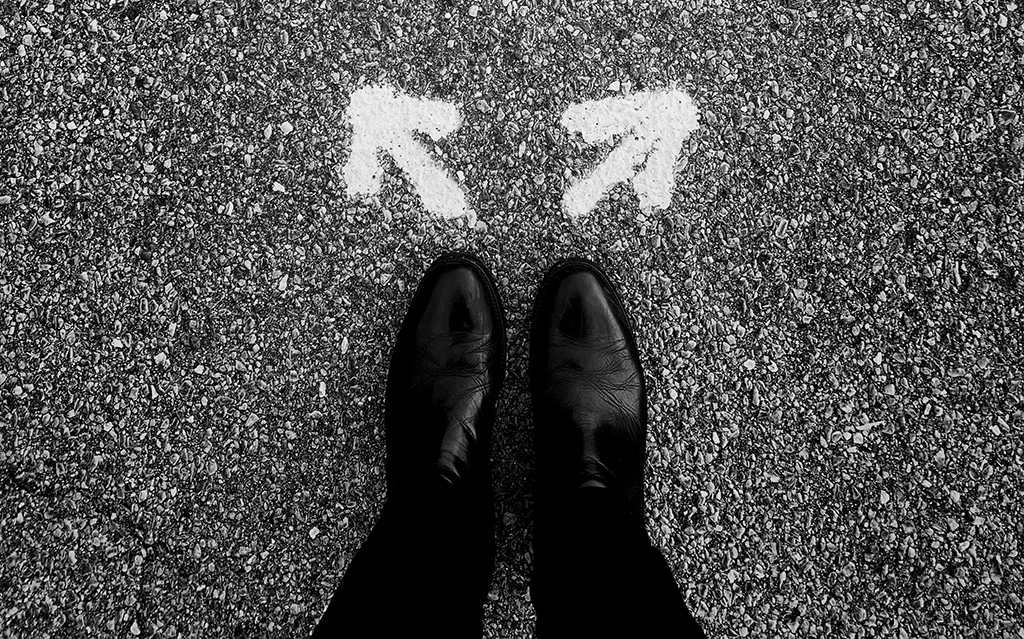 the slippery slope of unhelpful selfing: “Why didn’t I stay longer at my last job? There must be something wrong with me for wanting to be a writer. What if I fail all the course work for nursing school?”
the slippery slope of unhelpful selfing: “Why didn’t I stay longer at my last job? There must be something wrong with me for wanting to be a writer. What if I fail all the course work for nursing school?”
When decision-making thoughts become repetitive, demoralizing, and/or paralyzing, then it might be helpful to come back to no-self. No-self engages all the same capacities towards decision making without investing selfhood into them. For example, when contemplating a budget for monthly spending or the use of cash advance apps, no-self can engage the intellect and emotions in sorting through financial and lifestyle choices. No-self won’t take you down because there’s no “you” to become enmeshed with the budget decisions. A more or less frugal plan may get implemented, for example, without extrapolation about what that means about your worth as a person.
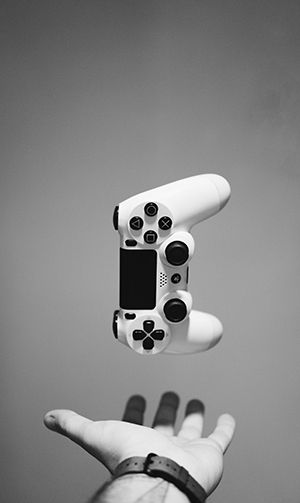
Downtime
Does selfing allow you to rest and recover from the day’s demands, to have fun? Check in with the content of your thoughts. Are they telling you to “buck up, be productive, stay busy?” Do you have to make a case with the self-arbitrator in your mind to have twenty minutes of playtime? Or, is the self-talk understanding and supportive: “Of course you need to chillax after such a stressful day. Go ahead and read that magazine, play Plants vs Zombies.”
If you feel conflicted about the whole notion of downtime, why not check-in with no-self? No-self is the sum total of how your being authentically expresses itself in the moment. Sometimes that expression is not subtle: stumbling through the front door at the end of the workday, mentally and physically spent, too tired to properly operate the microwave to heat up a frozen pizza which would taste better in the oven but you don’t have the bandwidth to wait that long. No-self’s intuition about how to proceed with downtime often takes its cue from what’s most obvious in how you feel.
***
We encounter these and many other opportunities throughout the day to slow down and make a conscious choice to remember who and what we are. Even as we practice smart-selfing, different degrees of re-immersion back into not-so-smart-selfing will still occur. But exclusive identification with the mind’s narrative becomes less likely the more one tastes the freedom of detachment from their thoughts.
The Wellspring Institute For Neuroscience and Contemplative Wisdom
The Institute is a 501c3 non-profit corporation, and it publishes the Wise Brain Bulletin. The Wellspring Institute gathers, organizes, and freely offers information and methods – supported by brain science and the contemplative disciplines – for greater happiness, love, effectiveness, and wisdom. For more information about the Institute, please go to http://www.wisebrain.org/wellspring-institute.
If you enjoy receiving the Wise Brain Bulletin, please consider making a tax-deductible donation to the Wellspring Institute. Simply visit WiseBrain.org and click on the Donate button. We thank you.
A Smart Selfing Society
Collectively, as we practice smart-selfing, we begin to challenge the cultural convention of automatically colluding with the self’s unbridled assumptions: that the self-story exists beyond the mind’s machinations and that it does so without alternative.
Smart-selfing allows people to step out of their trance with the mind’s netherworld: the preoccupation with ether images and ephemeral words that drift by like apparitions. Such preoccupation has veiled us from our most fundamental interconnection with one another; it has misled us into believing that we are each a separate, autonomous “I”, entombed within a separate, autonomous mind-body.
When smart-selfing as a society, we no longer take our I’s story as literal truth. Nor do we have to continue watching everyone else take their “I’s” story literally. Smart-selfing thus enables an evolutionary shift in identity. It halts billions of fictional accounts of separateness from continuing to play off one another like mirrored funhouse reflections contributing to a distorted conventional reality of stark aloneness.
Instead, smart-selfing primes the pivotal insight that consciousness is larger than the thoughts it contains. It prevents people from defaulting back to the mind’s assignment of solitary personhood. People can let go of the illusion of inhabiting a single piece of mind and abide instead within an all-encompassing peace of mind. We can step off our thought-based islands and embrace belonging to one inclusive sea.
The implications are nothing less than revolutionary! Smart-selfing provides a means of bridging division with apparent others, allowing humanity’s prosocial proclivities to more fully come on-line. “Charity” can now be understood as an automatic and humane giving to Oneself, rather than a self-depleting donation to others. Additionally, think of how recognition of such no-self unity might affect the recent trends of reduction in empathy and concerned perspective-taking towards others, how it might impact the current rise in traits of narcissism and materialism.
Smart-selfing engenders an all-embracing worldview without sacrificing our individuality. Every being still continues to enjoy its own thoughts and have its unique imprint upon the larger fabric of creation. That said, what emerges with a smart-selfing culture is more than the sum of the individual parts, just as in jazz, where each performance results in an improvisation that includes and transcends the contributions of the separate musicians. A communal inter-subjectivity emerges that manifests an informed, creative, and beneficial intelligence. This intelligence blossoms as no-self becomes conscious of itself. The more people able to get beyond their personal thought-spheres to practice smart-selfing, the larger the awakened field becomes.
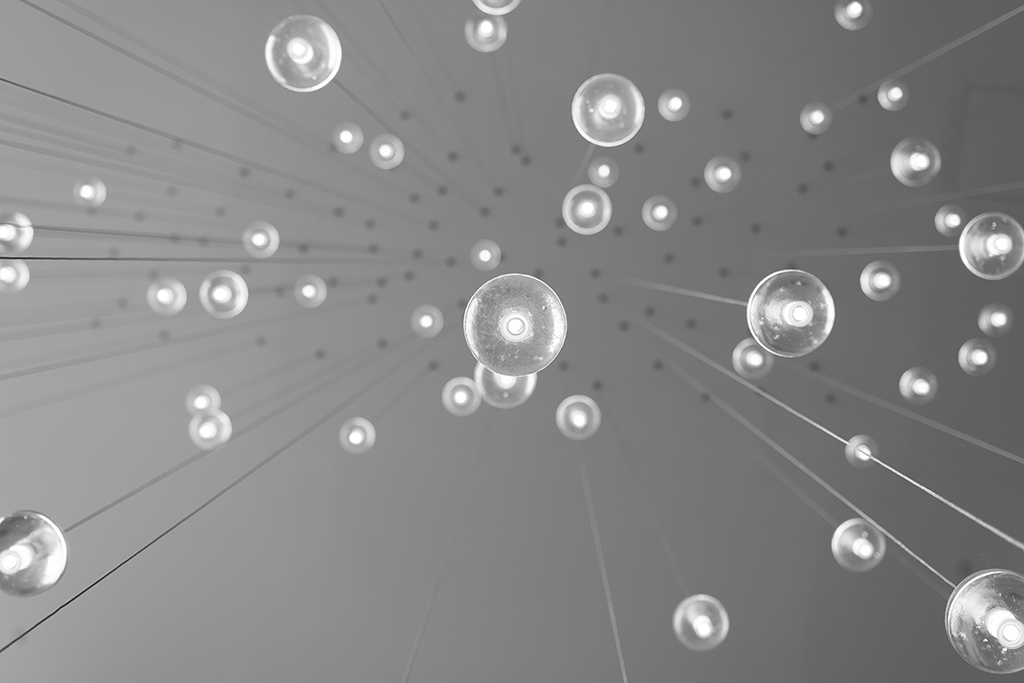
This is how a change in cultural consciousness can occur. As a visual, picture an entire room full of people standing in the dark (of self-identification), holding unlit candles (unrealized no-self). It only takes one “locofoco” – a self-igniting match – to brighten the whole room. Each person only has to light one other person’s candle for exponential luminosity to swell.
Then the momentum sets in. Like a social media wildfire, smart-selfing spreads. More and more people experience resonance of no-self after beholding it in another’s presence. Seeing beyond the veil of the self is no longer limited to a few select teachers and their followings. The center of gravity shifts. Exposure to one’s largest identity becomes accessible, normative, and utterly transformative.
Coming Home
Smart-selfing invites you to come home, to get reacquainted with the unspeakable mystery of what you are underneath the self’s story. This mystery tugs at us, summons us to return and abide as our original, most inclusive nature.

In this way, we are not so different from the salmon, compelled by an instinctual longing to trace the stream of our existence back to its source. But, unlike the salmon, we do not need to wait until the very end of our life cycle to return to no-self, nor have the body die soon thereafter! We do not need to trek through treacherous waters or scale steep falls. We arrive home, not by journey, but by remembrance. No-self is already who we are, revealed when selfing judiciously and no longer believing all the dictates of the mind. It is not some esoteric process or unreachable destination.
What we do as no-self may appear to be the same on the outside as what we do as a self. Washing the car is still washing the car. But, there is a difference on the inside. With the self, a self-conscious referencing of “me” divides the person from the activity. This does not occur with no-self; there is instead a seamless flow to experience. No-self is the undivided state, at one with form and activity.
No-self is not a washed-out spiritual bypass of life. You get to see and hear what else arises within you and around you when your thoughts no longer drown everything out. You begin to notice elements of goodness, beauty and truth in people and situations that the self might not expect. A gut-level recognition of wholeness and wholesomeness begins to quench a soul-thirst the self could never slake.
The bottom line is: you get to decide what’s an effective approach to your peace of mind, to the identity you wish to embrace. Should you practice smart-selfing, leading you towards the homing beacon that is no-self, your self won’t vanish in the process (at least not without your consent!). And you can always re-conjure it whenever you want to.
So, really, what do you have to lose?
ABOUT THE AUTHOR
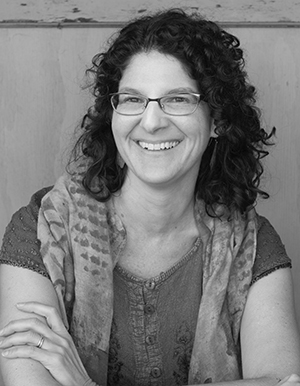 Kate Gustin, Ph.D., is a San Francisco Bay Area clinical psychologist and author. She received her education from Princeton University and the University of California, Berkeley and has worked in a variety of settings over the past twenty-five years as a mental health practitioner in outpatient psychiatry, community mental health clinics, VA Hospitals, and in college counseling services. She is currently in private practice in San Rafael, CA.
Kate Gustin, Ph.D., is a San Francisco Bay Area clinical psychologist and author. She received her education from Princeton University and the University of California, Berkeley and has worked in a variety of settings over the past twenty-five years as a mental health practitioner in outpatient psychiatry, community mental health clinics, VA Hospitals, and in college counseling services. She is currently in private practice in San Rafael, CA.
Dr. Gustin integrates the science of positive psychology into her psychotherapy, teaching, and consultation, and leads classes and trainings for students, patients, and health care professionals. This essay is a reworked excerpt from her book, The No-Self Help Book, which was published in fall 2018 by New Harbinger Press.
Purity
© 2018 Wendy Hubbard, M.Ed.
One day, while at the beach in Florida I had a casual conversation with a stranger, Marie. We quickly found that we had step-parenting in common and we both wrestled with feeling included in a family not of our own making (at least biologically).
I agreed to send her an article called “Cultivate Good Will” that I was reading on Rick Hanson’s Blog, Just One Thing. It was about cultivating the good amidst any tendencies to focus on how we don't belong or might be excluded.
The next day I saw her again on the beach and she said I had made an impression on her. Like a yoga teacher she once knew, she said I was "pure." In the moment I dismissed what she said. I found no place in myself to connect with purity.
I have since fallen out of contact with Marie but her words stayed with me. For a time they floated in the periphery of my mind. But then I woke from a dream in which I was in bed, with purity as a young daughter lying next to me.
I thought: "What if I used the exercises of the great teachers, Tara Brach and John Welwood, to make space and really embody this feeling of purity? They both have similar four-part exercises to make space for, embody, and receive support for difficult feelings. What if this exercise worked for positive feelings too?"
At a northern beach in the early morning I tried it. The first step in the process is acknowledging or recognizing the feeling, so I acknowledged and recognized purity. That was not too hard. The next step, allowing purity, was more difficult. Tara Brach tells us, "let it be as big as it is."

This was challenging! I felt purity bouncing around inside of me, ricocheting off all my impure, underserving places — whew! The third step was to enter or get intimate with purity. This step was excruciating. Images of destruction and crucifixion were swirling through me, of Christ on the Cross, parts of me dying so that purity could really enter my being. Finally came the step of receiving support, letting my purity meet purity itself. The bigger purity, the universal, non-personal purity. In this step I merged with purity itself. I let it consume me and it became me. I felt the strongest and most pure sense of the true benign nature of the universe.
Today, I imagine the color of purity and I let it fill me inside. It is a light blue and makes my being translucent so all life, love, and death can pass through.
ABOUT THE AUTHOR

Wendy Hubbard is a Pathwork Helper and has studied and practiced the Pathwork® for 25 years. She teaches Advanced Levels of Pathwork for groups, couples, and individuals. She is also certified in Hellinger Family Constellation Work and trained in Attachment and Trauma Work. This rich mix of modalities and trainings informs her work and enables her to bring hope and healing to her clients. https://beyondbroken.org/.
Emotional Self-Care
© 2018 Ruth Crowley-Brown, BA (Hons), CQSW, Dip. Psychotherapy
Emotions are incredible, and mysterious - they can materialize fully formed out of the blue, or build gradually to a powerful crescendo, or seep quietly into conscious awareness, surreptitiously nudging us towards action. They’ve been guiding us since early infancy, long before our cognitive faculties started to gain the upper hand - indeed our main psychological defenses (problematic types of thinking and behavior) that operate to protect us from emotional pain are formed during childhood. Another fundamental attribute of emotions is that they are “contagious” - infants need a powerful means of motivating their caregivers to look after them. Our emotions are still with us in adulthood, and if we haven’t found ways to successfully manage them, they may continue to have more influence than feels comfortable or appropriate. Professionals working with a wide range of population groups quickly come to appreciate the powerful influence of uncontained emotions.
A tenet I learned during my psychotherapy training was when we have one foot deep in our client’s world we must keep our other foot firmly on the bank. The mental acuity of reaching out to others while remaining securely anchored to our own needs is very important. But the subtext of “anchored to our own needs” can feel complicated because of the old-fashioned yet enduring idea that looking-out for oneself is somehow selfish. Thankfully in recent years the validity of self-care (in some settings) has gained traction, however professional courses that include training in emotional self-care still seem to be the exception rather than the rule.
Relating is, of course, a two-way street. As we listen to others we absorb a taste of their emotional life both consciously and unconsciously, and inevitable correspondences occur. Such resonances set in motion a cascade of associations, however remote the resemblances (we’re all human beings after all). That’s the nature of our innate defensive system - it involves a subliminal search for meaning and solutions, analogous perhaps to our physical immune system. Indeed our automatic reactions are so quick and subtle that we may be unaware that they have even been activated and sometimes it’s only on reflection that we’re able to realistically assess our internal and external responses.

During childhood, our cognition slowly carves out and differentiates meanings from our more fluid emotional and sensory-motor experience as we gradually learn to think rationally. But because our emotional default position is formed before rationality is well established an internal “systems update” is easier said than done. Old habits run deep which is why exploring the conditions of their origin can be very beneficial because (as they say in family therapy) potential solutions are often embedded within the issue itself. If, for example, someone was raised in a familial and cultural atmosphere where their emotional needs were not recognized or sensitively addressed, they won’t have had the opportunity to learn how to approach their own complex emotional needs, and self-care won’t come naturally. Indeed, they may unwittingly be replicating the initial deficit. Consideration of our personal history can help because it engages both cognitive and emotional faculties - by exploring our past we can come to understand that what felt necessary then (for our very survival) may not be our best strategy now.
Automatically suppressing our emotions can feel normal or even necessary, especially in professionally demanding situations, but the more we repress them, the more opaque and convoluted their expression can become (for they need an outlet). Furthermore, feeling out of touch with this vital part of ourselves is ultimately diminishing. With challenging workloads now being the norm, it can be useful to embed an emotional self-care structure into our working day, in a similar way to using the stairs, rather than the elevator, in terms of exercise. This level of planning can also help to counter our ubiquitous tendency for forgetting - it’s the reason why all cultures have developed ritual (it’s also why we write interminably long “to do” lists). Structure and rituals provide trigger-points that lead to a particular state of mind. Our unconscious mind, on the other hand is, being triggered all the time (subliminally surveying our environment for threats). The difference here is that this subliminal activation typically tends to happen in a haphazard way, governed by circumstances, old habits, and chance, rather than conscious oversight.
Emotional self-care doesn’t have to be a long, drawn-out process - in fact, it can simply serve as a trigger to galvanize our unconscious, because the main problem-solving component of our mental apparatus runs along unconscious tracks. A few quick strategic process interventions can make a big difference like the “butterfly effect.” Whereas content interventions are part of the normal reflective process (exploring how specific issues may be affecting us), process ones initiate the automatic sleuthing operations of the unconscious mind, which then continue behind the scenes. The Emotional Self-Care process-method outlined below is able to bridge the conscious/unconscious boundary not least because it also involves using 3 different inner communication channels - imaginative, cognitive and physical.

Imaginative
Active imagination was pioneered by the psychoanalyst Carl Jung and entails imagining our emotional selves as an “inner child” - an entity which is part of ourselves but also separate (this is somewhat reminiscent of narrative therapist Michael White’s “externalizing” the issue). Just as with a real child, if we feel upset or anxious, our adult self can offer support. Imagery is important. For example, we could imagine a kangaroo with a baby (let’s call him Joey) in her pouch going about her everyday business unimpeded, yet aware of her youngster’s condition: Is young Joey curled up asleep or peering anxiously, or curiously, out into the world?
Cognitive
Positive “self-talk” can be simple, straight forward and directive - our unconscious does listen to our conscious, even if we can’t perceive it at the time. Positive self-talk can also be creative and playful. I developed a “KFC” mnemonic, not to encourage the eating of fried chicken, but to use those familiar initials in another way as a reminder to remain Kind, Firm, and Calm in stressful and provocative situations. Repeated like a mantra, positive self-talk can lower anxiety and reduce blood pressure.
Physical
A physical dimension can be added by simply putting our hands on our stomach and gently feeling for the subtle rise and fall of the breath, or by becoming aware of how we’re holding ourselves (tense or relaxed). As with Eugene Gendlin’s “felt sense,” physical sensations are the ground zero on which our mental apparatus is based.
These three steps - active imagination (visual), cognitive (auditory) and physical (kinaesthetic) - can be used in any order, and singly (especially while learning), although using them in tandem is more powerful. And when they become the new norm, while not a panacea, they can significantly enhance well-being and performance.
A further related aspect is that using consciously generated thoughts and feelings (images and words) to occupy our mind-space helps to counter the mind’s natural tendency for rumination. Replaying events is normal within limits (as we’ve seen, they’re unconscious attempts to problem-solve) but without conscious intervention they can remain stuck on obscure, habitual loops from the past that lead nowhere.
Before rounding-up the discussion, a few words about integrating this method into everyday life are in order. Devising personal rituals and mnemonics, and mentally “attaching” them to particular situations or activities, can create doorways into positive mental states. Queuing for a sandwich or standing at the water cooler can offer an opportunity for a quick, silent run through of Emotional Self-Care’s imagine-whisper-soothe protocol. Such “mind games” can enable us to take a different stance in relation to our inner emotional world - rather than habitually ignoring our feelings, we can turn around and metaphorically embrace them. And it’s very interesting to see what happens when we do - rather than the emotions intensifying, which is often the fear, the feelings usually (and miraculously) dissipate. Perhaps because our “inner Joey” basks in positive attention, and our emotional world feels more settled and secure.
When our cognitive and emotional experiences are on the same page we become more sure-footed, and perhaps paradoxically, our adult sense of self strengthens by attending to our inner child. And although we function optimally when our cognition consciously takes the lead, its  management style is crucial. Respectful inner consultation is key - even though our unconscious mind might prefer old habits, if approached in the right way, it’s more than happy to take direction (towards new habits) when offered a realistic choice.
management style is crucial. Respectful inner consultation is key - even though our unconscious mind might prefer old habits, if approached in the right way, it’s more than happy to take direction (towards new habits) when offered a realistic choice.
Targeted mind training thus enables us to ‘reprogram’ ourselves to function in a more integrated and effortless way, and by avoiding the common panoply of inner “shoulds” it does so in a less pushy and more gentle and effective way. This is helpful not only for ourselves but also for our relationships - for a welcome by-product of feeling more emotionally grounded is enhanced empathy. Developing new habits of consciously turning our attention inwards, and plugging new modes of functioning into our unconscious operating system, can certainly pay huge dividends in terms of sustaining compassion, for ourselves and for everyone around us.
ABOUT THE AUTHOR
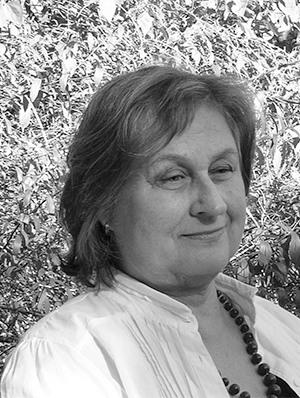
Ruth Crowley Brown is psychotherapist, social worker and writer. She has worked in London, England and Brisbane, Australia in Child & Adolescent Mental Health, Domestic & Family Violence, Foster Care and with Refugees and Aboriginal & Torres Strait Islanders. She’s also a longtime practitioner of Vipassana meditation and the Alexander technique.
Skillful Means: Confidence Building
Your Skillful Means, sponsored by the Wellspring Institute, is designed to be a comprehensive resource for people interested in personal growth, overcoming inner obstacles, being helpful to others, and expanding consciousness. It includes instructions in everything from common psychological tools for dealing with negative self talk, to physical exercises for opening the body and clearing the mind, to meditation techniques for clarifying inner experience and connecting to deeper aspects of awareness, and much more.
Confidence Building
Purpose/Effects
This is a neuro-linguistic programming exercise for building up confidence. Many people have low self-esteem. Often this manifests as lack of confidence, even about activities in which they are highly competent. Low self-esteem can lead to non-optimal outcomes.
By building up self confidence, we can improve the outcomes of our activities. Business deals, work, love relationships, friendships, etc. can all be enhanced by building up our confidence.
Method
Summary
Picture yourself with very positive attributes, while a large crowd of people applaud you.
Long Version
- Begin by getting grounded. In a nutshell, this means letting go of concepts and worries, and getting in touch with your body, your senses, and the present moment.
- Now close your eyes, and imagine yourself standing in front of you, looking back at you.
- Bit by bit, create a new you in your imagination that has all the characteristics that would give you incredible confidence. If what you want is a thin you, picture yourself thin. If you also want different hair, give the imaginary you the hair you desire. It can be anything, including non-visual characteristics. You may want a powerful voice, a brilliant mind, a super-sexy ability to make love, and so forth. Imagine yourself with all the characteristics and qualities that would give you the super confidence you desire.
- Watch the image of yourself change before your mind’s eye. Make sure that the image is big, bright, bold, and powerful.
- Imagine the feeling of confidence coursing through the veins of the imaginary you. Feel the rush of power, control, and fearlessness that comes with this confidence. Notice how the imaginary image even stands with the stance of great confidence, and holds its head in a leonine way.
- Next, when you are ready, walk around behind this imaginary image and step inside of it. Become it. Feel yourself experiencing all the sensations of having amazing confidence. Notice how your body changes, your stance shifts, even your gaze subtly alters to express this volcano of confidence within you.
- Now imagine that this new you is standing in front of a large audience of admirers. They are cheering and clapping, and swooning with adulation and devotion to you.
- Pay particular attention to where the positive feelings you are having are located in your body. This spot is the center, the physical source point of your confidence. Feel into it deeply with your body awareness.
- Continue alternating between the visualization and the feelings of confidence in your body for as long as you wish. This exercise should feel very good.
History
This grounding exercise is a combination of many similar exercises. It is a quick, basic mindfulness practice that will get you in touch with your sensory experience the present moment.
SEE ALSO
EXTERNAL LINKS
Fare Well
May you and all beings be happy, loving, and wise.

